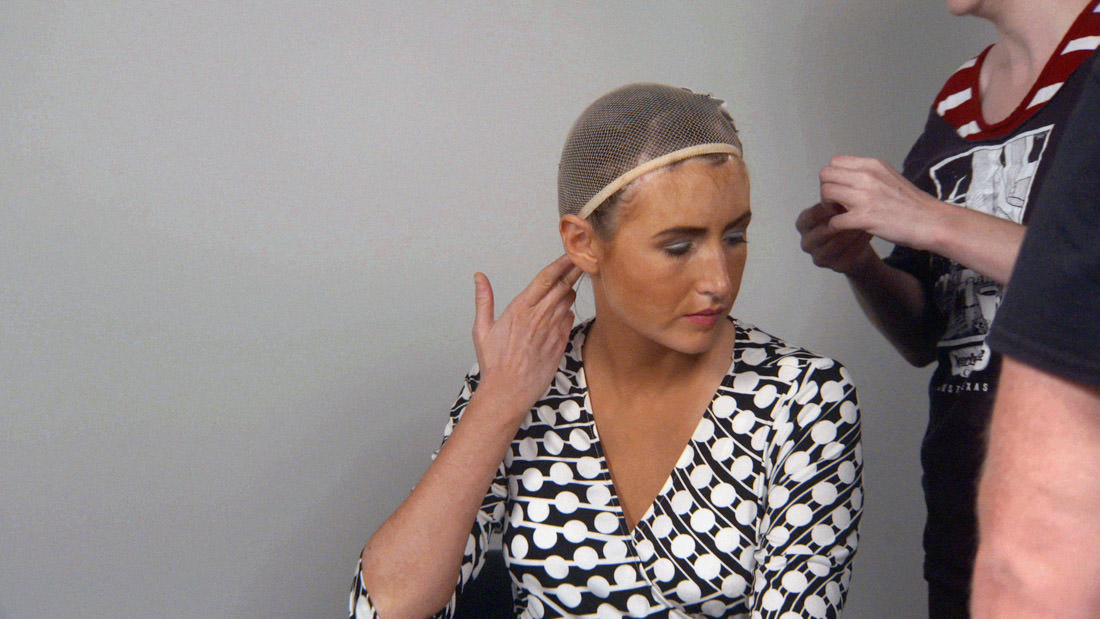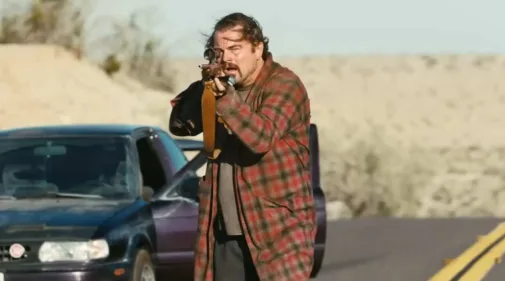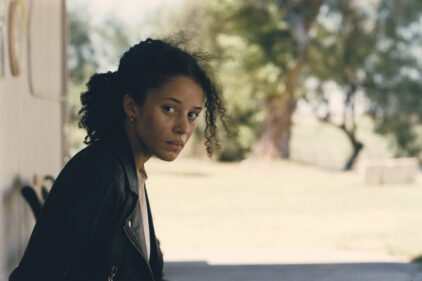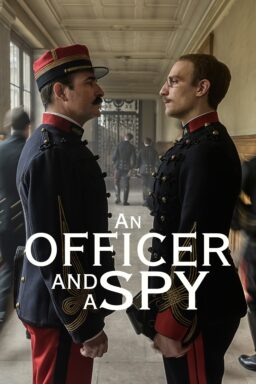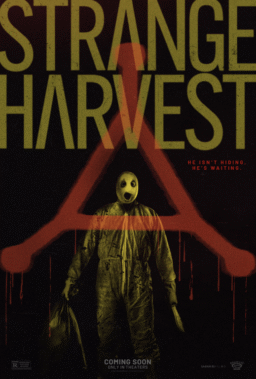There are any number of reasons to bundle Antonio Campos’ “Christine”
and Robert Greene’s “Kate Plays Christine” into one report from the Sundance
Film Festival. Of course, it’s an obvious choice given their shared subject
matter—the 1974 on-air suicide by Sarasota local news reporter Christine
Chubbuck—but what I find most fascinating is the drastically different
approaches taken by the two films to the same story. While one might presume
that the film premiering in the U.S. Documentary Competition section of the
program would be more intent on explaining the details and possible motives
behind such a drastic action, it is actually the fictionalized retelling in the
U.S. Narrative Competition that feels like it’s seeking reasons for the unexplainable. One approach
mesmerizes, leaving viewers with questions about the very function and purpose
of storytelling; one approach disappoints, reaching for things that perhaps
cinema cannot grasp despite the efforts of everyone involved.
Robert Greene (“Actress”) had been trying to unpack a way to
tell Christine Chubbuck’s story for years, only finding a way into it when he
chose an approach that wouldn’t exactly retell the grizzly details but almost
run parallel to them. In “Kate Plays Christine,” Greene chronicles the making of
a movie-within-the-movie about Christine Chubbuck. He focuses more on star Kate
Lyn Sheil (“Sun Don’t Shine”) as she takes on the role and goes through the
research process of playing someone who would not only take her life but do so
on afternoon television, at a time when she knew children would be watching.
Greene follows Christine around Sarasota, and opens up the conversation not
just to what happened to Christine Chubbuck but why we tell stories like this
in the first place, the intrinsic links between suicide and depression, and
even gender roles. It does not go unnoted that this story about a depressed
woman in Florida inspired “Network” and her “character” was changed to an older
white man.
One of the interesting initial elements of “Kate Plays
Christine” is how many people, even in the Sarasota area, have forgotten this
story. You won’t find YouTube footage of Christine shooting herself. There’s
even little footage of her earlier on-air appearances, leading Sheil to
struggle at first even in how to physically capture the real person she’s
portraying. A Sarasota historian memorably says, “You die when you pass away
and you die the second time the last time someone mentions your name.” In that
sense, perhaps it is reason enough to tell Christine Chubbuck’s story just
because it’s not time for her to die a second time yet. Why did most of us
forget this story? Is it because suicide and depression are topics that scare
people? Green and Sheil come to the reasonable conclusion that Chubbuck wanted
to start a conversation about depression, and so they seek to do the same in
telling her story. Consequently, they get at something about depression that
few films have—its unexplainable hold. Did Christine want children? Did she
hate the blood and guts cycle of the news that she railed against? Was she
sick? None of these are the answer. And yet all of them are too.
Of course, that makes a job tough for an actress, and Sheil
is captivatingly honest about her own issues with depression and gender role
expectations of success and love by a certain age. Greene blurs the line
between the actress and who she plays, and the film is gorgeously shot by Sean
Price Williams, who lensed “Heaven Knows What” and “Queen of Earth.” I suspect
that the ending will be a bit controversial, but how else could this story end?
Christine Chubbuck wanted to get people talking, and so Robert Greene has made
a film that does exactly that.
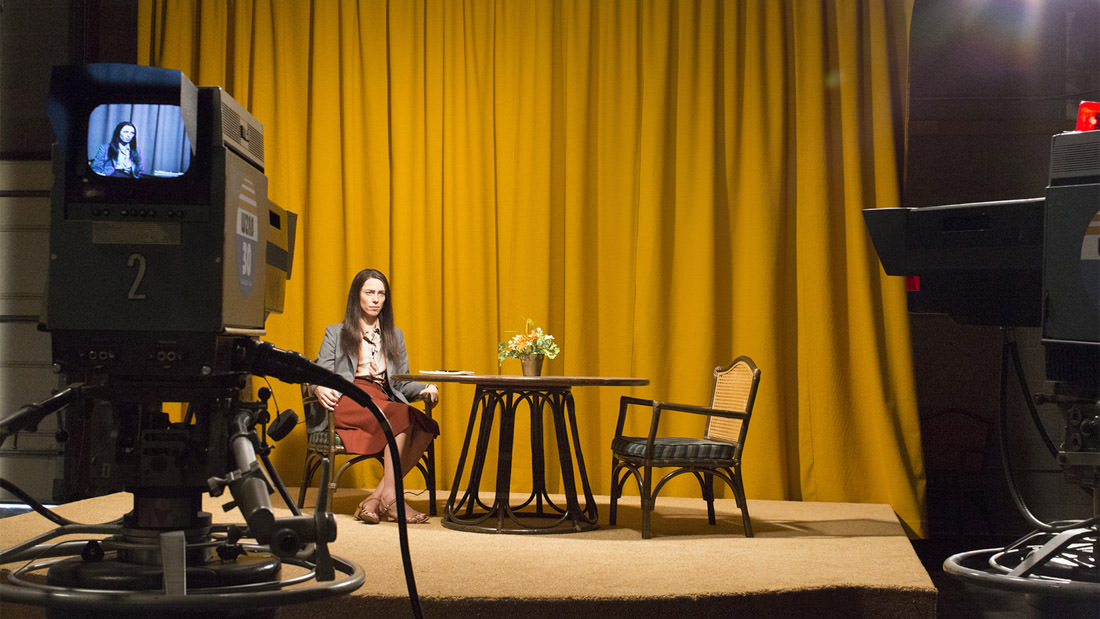
Antonio Campos’ film about Christine wants to do too much of
the talking for her. Rebecca Hall steps into the role of the title character in
a full-blown period piece co-starring Michael C. Hall as a fellow anchor. In a
surprisingly straightforward fashion, “Christine” seeks to tell the story of
the last few months of Chubbuck’s life. She’s repeatedly frustrated by her news
station’s move to an “If It Bleeds, It Leads” aesthetic. She’s lonely, worried
that both her advancing age and health problems mean that the window is closing
on her chances to be a mother. She has few friends, and is undeniably awkward
socially. Hall plays Chubbuck with an amplified degree of anxiety through her
wide eyes and stilted cadence. Hall’s Chubbuck is a woman who always seems
uncomfortable in her own skin. She’s a good actress but many of her choices
here feel too broad, ways to show us how different Christine Chubbuck was from everyone around her.
The biggest problem with “Christine” is how much of it feels
like it’s trying to “explain” who Christine was and what pushed her to shoot
herself, but it doesn’t help that the film is disappointingly flat when it
comes to style. Campos has shown flashes of brilliance when it comes to
imagery, but he directs “Christine” straightforwardly, progressing from event
to event in Chubbuck’s life without building enough tension to the inevitable
conclusion. A lyrical or indirect approach might have worked, but a mere
retelling of events with an emphasis on the moments that might have led to a
suicide rings false. One scene in particular in which Chubbuck answers a series of questions that essentially recount the problems in her life feels too much like definitive answers by a screenwriter and not something organic. In the end, Christine Chubbuck believed in human interest
stories over sensational ones, and so there was likely an understandable
aversion to sensationalizing her story, but Campos and his team never found
another angle to take. As Greene’s film convincingly portrays, maybe there isn’t
one.

